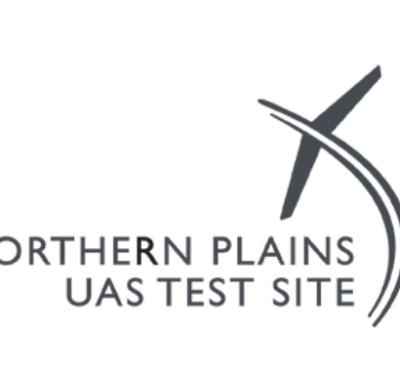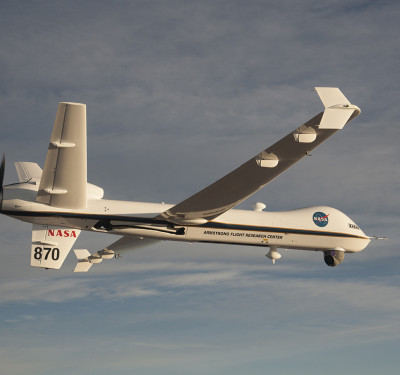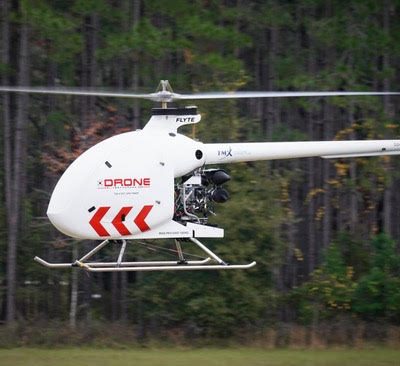At Xponential 2024 in San Diego, Inside Unmanned Systems sat down with Tom Furey, CEO of Sagetech Avionics, to discuss the company’s transponder technologies, the significance of Mode 5 IFF, and the future of safe BVLOS operations.

IUS: Tom, many of our readers are familiar with Sagetech Avionics. Could you give us a bit of the company’s history and your primary technology focus?
Tom Furey: Sure. Sagetech has an interesting history. Originally, there was Sagetech Corporation, which supported Boeing’s Insitu with various services, including engine dynamometer testing and electronics. Around 2009, Boeing needed a transponder for their small drones that were invisible on radar. The transponders at the time were too large and heavy, so Sagetech Corporation developed the first micro transponder, which was a circuit card for the ScanEagle. We commercialized this into a business card-sized transponder and have continued to evolve it.
IUS: When you say “evolve,” what specific advancements are you referring to in terms of size, weight, power, and functionality?
Tom Furey: We’ve significantly reduced size, weight, and power while increasing functionality and certification. Our first transponder was Mode C, which only indicated altitude. We then moved to Mode S, adding GPS information. This evolved into ADS-B, which broadcasts your position and other data. In 2019, Sagetech Corporation’s transponder assets were acquired, forming Sagetech Avionics. Since then, we’ve added military IFF functionality, certified our technologies, and developed the MX12B platform, which supports both civil and military transponder capabilities.
IUS: Let’s delve into IFF [Identify Friend or Foe]. Can you explain its history and current importance in military and civil aviation?
Tom Furey: IFF originated in the 1940s with the British to distinguish between friendly and enemy aircraft. It evolved into modern transponder technology. IFF in the military involves encrypted interrogation and response, ensuring only friendly aircraft are identified. The latest mode, Mode 5, provides advanced GPS integration and encryption, mandated across NATO since 2020. While most manned military aircraft use Mode 5, smaller drones have yet to fully adopt it, largely due to size, weight, and cost constraints.
IUS: For larger platforms, how does integrating Mode 5 work? Is it a complex process?
Tom Furey: Integration is relatively straightforward for larger platforms. We designed our transponders, like the MX12B, to be modular. This allows manufacturers to easily switch between our civil MX transponder and the military MX12B. The process involves integrating the transponder with the autopilot or mission computer and ensuring proper antenna placement. This flexibility simplifies retrofitting and meets various customer needs.
IUS: How is Mode 5 adoption for small UAS progressing? What are the main challenges?
Tom Furey: Adoption is slower for small UAS due to size, weight, power, and cost challenges. While Mode 5 is essential for identifying friendly aircraft and preventing fratricide, current transponders are too large and expensive for small drones. Additionally, handling encrypted data securely is a concern. We are exploring solutions like offloading encryption to ground control stations and developing smaller, more affordable transponders.
IUS: Given the evolving threats and operational requirements, how do you see the role of Mode 5 in counter-UAS and combat environments?
Tom Furey: Mode 5 is crucial in combat environments to prevent friendly fire incidents. For small UAS, which are increasingly used in combat, Mode 5 can help distinguish between friendly and enemy drones. We need to adapt both the technology and operational concepts to ensure effective implementation. This includes using Mode 5 in conjunction with other technologies like radar and camera systems for comprehensive airspace awareness.
IUS: AI and autonomy are becoming more prevalent in defense systems. How can IFF integrate with AI-driven autonomous systems?
Tom Furey: AI can help manage IFF usage intelligently. For instance, in a swarm, AI could determine which drone should have its IFF active to avoid detection by enemies. AI can also use IFF data for secure communication within a swarm or between logistics drones and ground soldiers. This integration enhances situational awareness and decision-making in autonomous operations.
IUS: Let’s talk about your company’s involvement in beyond visual line of sight [BVLOS] operations. How does Sagetech’s technology contribute to safe BVLOS operations?
Tom Furey: Our technology, particularly the MX12B transponder with ADS-B and Mode 5 capabilities, is integral to safe BVLOS operations. It ensures that drones can detect and avoid other aircraft, a key requirement for BVLOS. We also work on integrating non-cooperative sensors like radar and cameras to provide comprehensive airspace awareness. These technologies, combined with collision avoidance systems like ACAS X, form a robust safety framework for BVLOS operations.
IUS: Speaking of ACAS X, can you explain its significance and how it enhances airspace safety?
Tom Furey: ACAS X [Airborne Collision Avoidance System X] is an advanced collision avoidance system that extends beyond the capabilities of TCAS [Traffic Collision Avoidance System]. It offers specific algorithms for different aircraft types, including Rotorcraft [ACAS Xr] and large fixed-wing unmanned aircraft [ACAS Xu]. ACAS X integrates data from ADS-B and non-cooperative sensors, providing comprehensive collision avoidance guidance. This technology is crucial for enabling safe and autonomous BVLOS operations.
IUS: What are the main challenges in developing and deploying ACAS X, and how is Sagetech addressing them?
Tom Furey: One of the main challenges is finalizing the algorithms and obtaining certification from regulatory bodies like the FAA. We’re working closely with our customers and collecting real-world data to ensure these algorithms are robust and reliable. Another challenge is integrating ACAS X with non-cooperative sensors. We collaborate with sensor manufacturers to develop and test these integrations, ensuring seamless and effective collision avoidance.
IUS: How does Sagetech ensure that its products meet both current and future market needs, particularly in the rapidly evolving UAS industry?
Tom Furey: We maintain close relationships with our customers and stay engaged with regulatory bodies to understand evolving requirements. Our modular and scalable product designs allow us to quickly adapt to new standards and operational needs. We also invest in continuous R&D to enhance our technologies and ensure they remain at the forefront of the industry.
Learn more at Sagetech Avionics.






